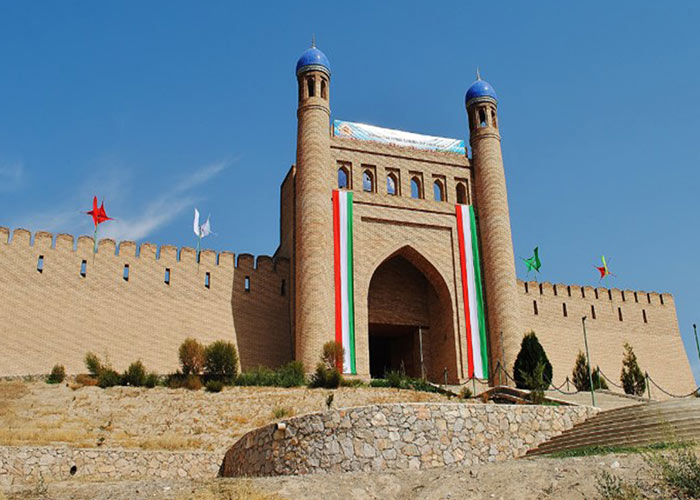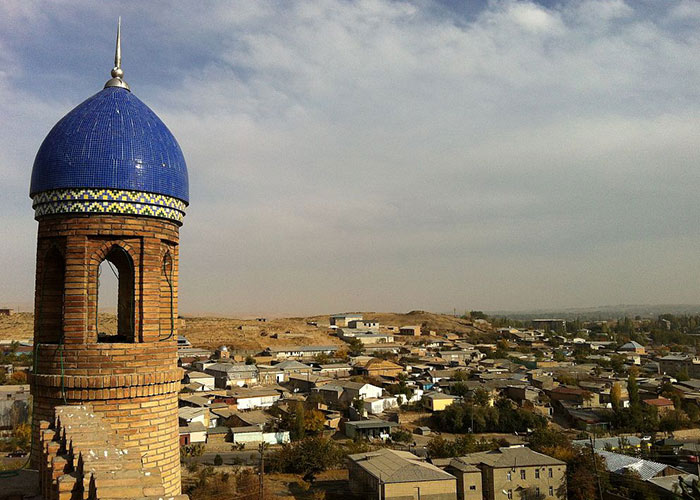The city of 185,000 inhabitants has approximately half of its inhabitants living in the city and half outside of it.
The territory of the ancient city measures 183,009 hectares. Istaravshan has several borders on the southeastern side of the border with Kyrgyzstan and China, and to the south with Uzbekistan.
During the archaeological excavations, archaeologists in 1954 discovered a plate of black slate that belongs to the Mousterian period of the Stone Age. It has been over 100,000 years.
Originally, the name was Istaravshan Kurushkada (Kiropol). So it was named after the founder of the Persian Empire by the name of Cyrus-Kurush.
Handicrafts and decorative art were developed in Kiropol over many years. The city grew and developed at a faster pace at the time of the approaching troops of Alexander the Great. The ancient city was considered large and fortified.
Alexander the Great was able to capture the ancient city of Tajikistan, but the frequent uprisings of the local populace brought the commander to the decision to destroy it to the ground.
The city began to revive again, and grew and developed faster than before. In the late 15th century, the Timurid ruler Sultan Makhmudkhon controlled it.
Assaults and seizures continued. In any case, this did not inhibit the development of trade and agriculture.
In the 19th and 20th centuries, Istaravshan became the major center of horticulture, trade, gardening, and crafts. According to the records of 1878, which were discovered by archaeologists and scholars, it became clear that most of its territory was occupied by orchards.
In 1882, the first brick factory appeared in the city.
In 1898, the first library, pharmacy, and military hospital were built.
By 1929, the city began the construction of hotels, cinemas, schools, power stations, and TV and radio broadcasting.
Nowadays, Istaravshan is considered the biggest center for craft pottery and woodcarving. The artisans of Istaravshan are known far beyond the borders of the republic.
For example, Yuldoshbek Barotbekov, N. Mirsaidov, Alijon Yaheev, Yusufjan Rauf Ahmadov Mukhtor, Samandarov Ergash, and many others. From generation to generation, they have passedon their secrets and are considered professional artists when working with leather and wood.
The works of these talented masters of Arts and crafts adorn the museums of the Republic of Tajikistan and participate in international exhibitions.
In the city of Istaravshan, tourists can get acquainted not only with the exposition of the museum and learn the detailed history of the ancient city, but also with such ancient historical and archaeological sites as the fortress Kah-kaha, madrassas Kuk-Gumbaz, Chorgumbaz ensemble, and Sari Mazor, a fortress of Childuhtaron, noting settlement Moog-Teppa. Our travel organization "Orient Mice" is glad to provide you with transportation and expert guides who will implement memorable historical and natural tours of the ancient city of Istaravshan for you.
The territory of the ancient city measures 183,009 hectares. Istaravshan has several borders on the southeastern side of the border with Kyrgyzstan and China, and to the south with Uzbekistan.
During the archaeological excavations, archaeologists in 1954 discovered a plate of black slate that belongs to the Mousterian period of the Stone Age. It has been over 100,000 years.
Originally, the name was Istaravshan Kurushkada (Kiropol). So it was named after the founder of the Persian Empire by the name of Cyrus-Kurush.
Handicrafts and decorative art were developed in Kiropol over many years. The city grew and developed at a faster pace at the time of the approaching troops of Alexander the Great. The ancient city was considered large and fortified.
Alexander the Great was able to capture the ancient city of Tajikistan, but the frequent uprisings of the local populace brought the commander to the decision to destroy it to the ground.
The city began to revive again, and grew and developed faster than before. In the late 15th century, the Timurid ruler Sultan Makhmudkhon controlled it.
Assaults and seizures continued. In any case, this did not inhibit the development of trade and agriculture.
In the 19th and 20th centuries, Istaravshan became the major center of horticulture, trade, gardening, and crafts. According to the records of 1878, which were discovered by archaeologists and scholars, it became clear that most of its territory was occupied by orchards.
In 1882, the first brick factory appeared in the city.
In 1898, the first library, pharmacy, and military hospital were built.
By 1929, the city began the construction of hotels, cinemas, schools, power stations, and TV and radio broadcasting.
Nowadays, Istaravshan is considered the biggest center for craft pottery and woodcarving. The artisans of Istaravshan are known far beyond the borders of the republic.
For example, Yuldoshbek Barotbekov, N. Mirsaidov, Alijon Yaheev, Yusufjan Rauf Ahmadov Mukhtor, Samandarov Ergash, and many others. From generation to generation, they have passedon their secrets and are considered professional artists when working with leather and wood.
The works of these talented masters of Arts and crafts adorn the museums of the Republic of Tajikistan and participate in international exhibitions.
In the city of Istaravshan, tourists can get acquainted not only with the exposition of the museum and learn the detailed history of the ancient city, but also with such ancient historical and archaeological sites as the fortress Kah-kaha, madrassas Kuk-Gumbaz, Chorgumbaz ensemble, and Sari Mazor, a fortress of Childuhtaron, noting settlement Moog-Teppa. Our travel organization "Orient Mice" is glad to provide you with transportation and expert guides who will implement memorable historical and natural tours of the ancient city of Istaravshan for you.




